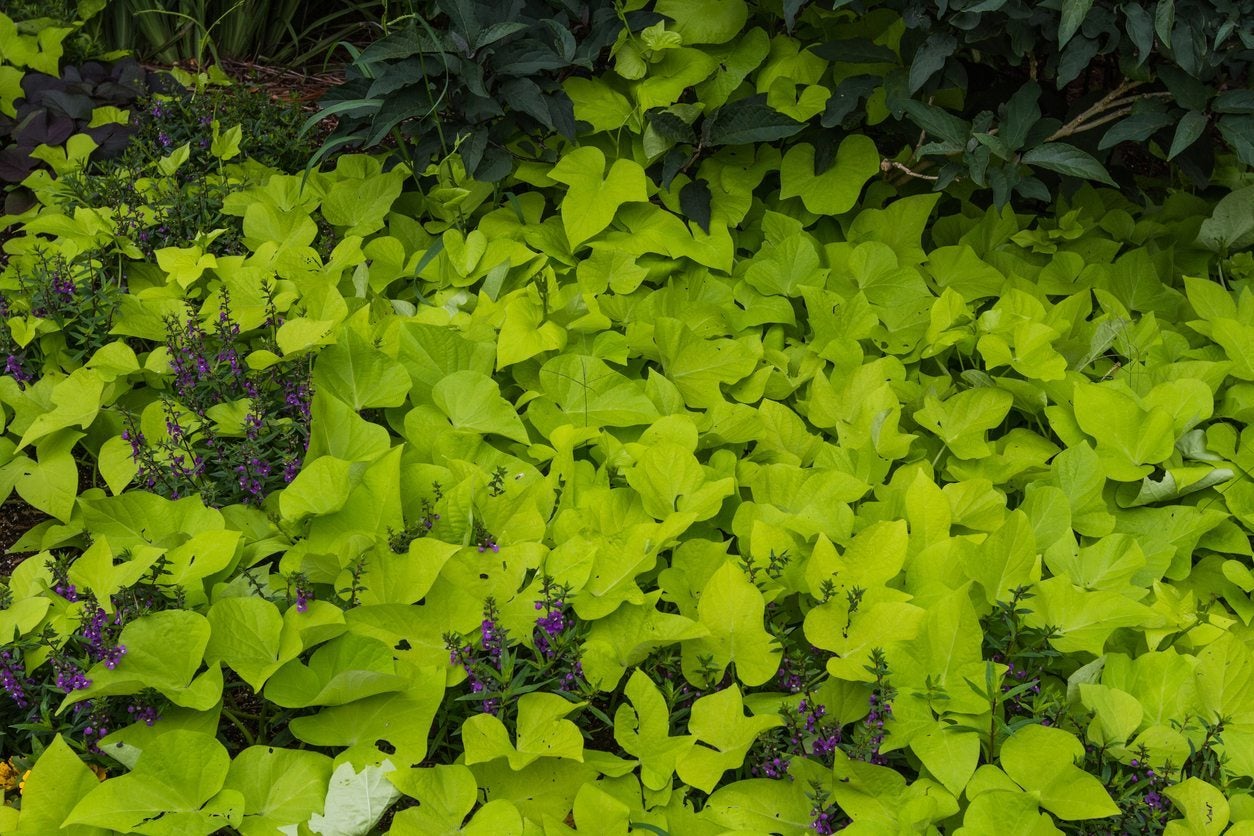Sweet Potato Vine Division: Tips On Dividing Sweet Potato Vines


Ornamental sweet potato vines (Ipomoea batatas) are attractive, decorative vines that trail gracefully from a pot or hanging basket. Greenhouses and nurseries charge a fairly hefty price for sweet potato vines, but splitting sweet potatoes is one way to create new vines with very little investment of time or money. Dividing sweet potato vines to propagate new vines is easy, as the vines grow from fleshy underground tubers. Read on for tips on sweet potato vine division.
When to Divide Sweet Potatoes
Sweet potatoes grow year-round in USDA plant hardiness zones 9 to 11, but in cooler climates, sweet potato tubers must be stored in a cool, dry area for the winter. Either way, spring is the best time for splitting sweet potatoes. Divide in-ground sweet potatoes as soon as new shoots measure 1 to 2 inches (2.5-5 cm.). Divide winter-stored sweet potatoes as soon as you remove them from storage – after all danger of frost has passed.
How to Divide a Sweet Potato Vine
Carefully dig in-ground tubers from the ground with a garden fork or trowel. Rinse the freshly dug tubers gently with a garden hose to remove excess soil. (Winter-stored sweet potatoes should already be clean.) Discard any soft, discolored, or rotted tubers. If the damaged area is small, trim it off with a knife. Cut the tubers into smaller chunks. Be sure every chunk has at least one “eye,” as this is where new growth begins. Plant the tubers into the soil, about 1 inch deep (2.5 cm.). Allow about 3 feet (1 m.) between each tuber. Sweet potatoes benefit from full sunlight, but afternoon shade is helpful if you live in a climate with hot summers. You can also plant tubers in a pot filled with well-drained potting mix. Water the tubers as needed to keep the soil evenly moist but never soggy. Overly wet soil can rot the tubers.
Gardening tips, videos, info and more delivered right to your inbox!
Sign up for the Gardening Know How newsletter today and receive a free copy of our e-book "How to Grow Delicious Tomatoes".

A Credentialed Garden Writer, Mary H. Dyer was with Gardening Know How in the very beginning, publishing articles as early as 2007.
-
 Get Ready For A Summer Of Hummers! Grow These Full Sun Hummingbird Plants and Flowers
Get Ready For A Summer Of Hummers! Grow These Full Sun Hummingbird Plants and FlowersIf you’re lucky enough to enjoy a sunny backyard, make sure you are maxing out on your pollinator opportunities and grow these full sun hummingbird plants and flowers
By Tonya Barnett
-
 12 Lush Alternatives To A Lawn For Sustainable Spaces
12 Lush Alternatives To A Lawn For Sustainable SpacesAlternatives to a lawn are beautiful and also beneficial to your local ecosystem and its pollinators. Explore our top picks for plants to replace grass.
By Tonya Barnett